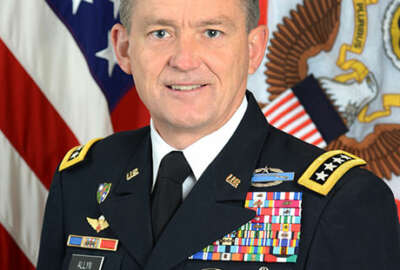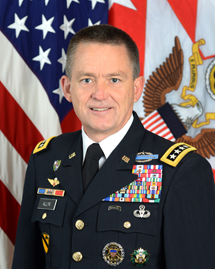
Only a fraction of non-deployable soldiers are capable of regaining deployable status
The Army has 100,000 non-deployable troops, mostly due to medical reasons, Vice Army Chief of Staff Gen. Daniel Allyn says only 10,000 will be eligible to fight...
Only 10 percent of non-deployable Army soldiers are able to regain their status as fit enough to serve their intended enlisted duty.
Last year, Sgt. Maj. of the Army Daniel Dailey said the biggest problem in the Army is soldiers who are non-deployable having a direct impact on military readiness.
Today, 100,000 soldiers are considered non-deployable. One in every 10 of those soldiers can be recuperated by the Army to be considered deployable, said Army Vice Chief of Staff Gen. Daniel Allyn.
Non-deployable soldiers “cannot fill their position and perform the task for which they were enlisted,” Allyn said during a June 13 speech at the Heritage Foundation.
That presents a problem for the Army if it needs to call on its troops to rapidly deploy to a wartime situation.
The Army is already drawing down its total force to just under 1 million active, reserve and guard troops by 2018. With 100,000 unable to deploy, the number of soldiers available for use in a contingency operation lowers to about 880,000.
That’s a problem for the Army, especially when 64 percent of the troops used by the combatant commanders are Army.
Allyn said the Army can do a much better job in speeding up the recuperation of the 10,000 troops that can become deployable again.
About 80 percent of non-deployable troops reached that status due to medical issues, Allyn said.
“We know that we can gain efficiency in terms of speed with which we transition these folks, either back to full readiness or to another phase,” Allyn said. “We have to work with the [Department of Veterans Affairs] on the vast majority of the rest of them to ensure we transition them to [VA] care as efficiently and effectively as possible.”
Allyn said the process takes too long now and the Army is working with the VA to change that.
The issue of non-deployable soldiers ties in with the Army’s retention rate. While some areas of government and the military are having trouble retaining their employees, the Army is over-retaining.
“We’ve had to actually ask people to leave because as we’ve gotten small we’ve been over strength in certain ranks and grades for the force that we will be in the future and these people that we’re asking to leave are professionals. Most of them, over 50 percent, have two or more combat deployments,” Allyn said.
The Army is partly dealing with over retention by tightening its retention control points.
Retention control points are the maximum amount of years an enlisted soldier can serve before he or she must be promoted or leave the Army.
On May 26 Army Secretary Eric Fanning signed a directive lowering the number of years noncommissioned officers can spend at certain ranks.
“As the Army force structure changes, it is critical that we retain the NCOs with the most potential while making our future leadership development model a priority. The Army NCO Corps is the backbone of our Army and we will continue to allow senior NCOs to serve a tenure that supports a balanced, healthy promotion system for all enlisted ranks,” an Army spokesman told Federal News Radio.
About 3,000 NCOs will be laid off.
But that may not be a bad thing, said Jon Ostrowski, director of government affairs for the Noncommissioned Officer Association.
“For certain reasons, economic or whatever, people stay in [the Army] as long as they can,” Ostrowski said.
The Army isn’t necessarily losing 3,000 positions, but 3,000 employees. Those positions will be filled by younger Army NCOs.
What’s important to note is they won’t be inexperienced soldiers taking those spots. Rather they will most likely be soldiers with 20 or more years of experience who have been unable to advance to the next rank because there were no open positions.
The retention control points are a way of bringing in fresh blood to the ranks.
“It’s like pruning a tree. You get rid of some of the leaves and branches that are getting old and next thing you know the tree is a bigger, stronger tree. We just have to make sure to prune properly,” Ostrowski said.
Copyright © 2024 Federal News Network. All rights reserved. This website is not intended for users located within the European Economic Area.
Scott Maucione is a defense reporter for Federal News Network and reports on human capital, workforce and the Defense Department at-large.
Follow @smaucioneWFED





